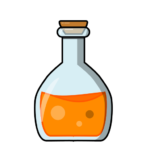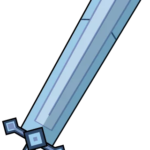How to Make an RPG Game (ARPG, MMORPG, SRPG, J-RPG)
Role-playing games, or RPGs, come in many different sub-genres. Some of the most popular include dungeon crawlers, tactical RPGs, and action RPGs. Each sub-genre has its own unique features and mechanics that set it apart from the others.
Making your own RPG game can be a fun and rewarding experience, but it can also be challenging. There are a lot of different pieces that go into making a good game, and if you’re not prepared for the work that goes into it, your project may never see the light of day.
Essential Elements of an RPG Game
When you’re thinking about making an RPG game, there are a lot of different features that you could include. But not every feature is a “must-have” for every RPG. Here are some things to consider:
- A Good Storyline – This is probably the most important aspect of any RPG. Players need something to be invested in, and a good story can provide that. Without a strong story, it can be very difficult to keep players engaged. Your plot should be well-thought-out and make sense within the context of your game world. It should be engaging and exciting, with plenty of twists and turns to keep players guessing. Most importantly, it should give players a reason to care about the game and its characters. If you can craft a compelling story, you’ll be well on your way to creating an RPG that players will love.
- Interesting Characters – Your RPG game needs interesting characters in order to keep players engaged. These characters should be relatable in some way so that players feel like they are part of the story. Additionally, the characters should have depth and be well-rounded. Players should feel like they know the characters and what motivates them. In short, interesting characters are essential to a good RPG game. When creating your game, take the time to flesh out your characters. It will pay off in the end when you have players who are emotionally invested in your game.
- Exciting Combat – Another key component of most RPGs is combat. This is what allows players to test their skills and see how they stack up against others. However, if combat is not exciting and engaging, players will quickly lose interest. There are a few key things that you can do to make sure your combat system is exciting and engaging. First, make sure there is a variety of different ways to engage in combat. This can include melee, ranged, and magical attacks. Second, make sure there are a variety of different enemy types. This will keep players on their toes and prevent them from getting too comfortable. Third, make sure there are a variety of different rewards for victory. This could include XP, loot, and even just bragging rights. If you can make your combat system exciting and engaging, you’ll go a long way toward keeping your players interested in your game.
- Strategic Gameplay – In many RPG games, strategic gameplay is a welcome addition. Players often have to make strategic decisions to progress, such as deciding which items to use in battle or which abilities to level up. Whatever form it takes, strategic gameplay usually provides an enjoyable challenge for players. In some cases, it can even be the key to success in the game. For example, in the popular RPG game “Final Fantasy VII,” players must carefully choose which items and abilities to equip to defeat the game’s tough bosses. Without a good strategy, it can be very difficult to progress in the game.
- A Sense of Progress – One thing that all RPGs need is a sense of progression. Players should feel like they’re making meaningful progress as they play your game, and this often comes in the form of character development or new abilities/skills/items that can be unlocked over time. When done well, this sense of progression can keep players hooked for hours on end as they slowly but surely make their way to becoming the powerful hero they aspire to be. However, if not done properly, it can lead to players feeling frustrated and even bored, causing them to abandon the game entirely. As such, it is crucial that developers carefully consider how they will implement this key aspect of RPGs into their games.
- Customization Options – Many role-playing games offer players a sense of customization and ownership over their characters through different classes, skill trees, and equipment sets. These options help to make each player’s experience unique and allow them to progress in the game at their own pace. For example, some players may choose to focus on developing their character’s combat skills, while others may prefer to focus on exploration or diplomacy. This sense of customization gives players a deep investment in their characters and the world around them, and it helps to create a more immersive experience.
- Strong server – In recent years, many RPGs have included network features, such as online multiplayer and co-op. While these aren’t essential for every game, they can add to the overall experience. However, if you want to develop an MMORPG game, then a strong server is an absolute necessity. The server is responsible for managing all of the game data and player interactions. If the server is down, then the game will be unplayable. Furthermore, if the server is slow or unreliable, then players will likely experience lag issues and other problems. As a result, it’s important to invest in a high-quality server that can handle the demands of an MMORPG. Otherwise, your game will likely be plagued by technical issues.
- Variety – Finally, it’s important for an RPG to have some variety in both gameplay and content. If every mission is just a variation on the same theme, or if all the enemies are just palette-swapped versions of one another, then players will quickly become bored. It’s important to keep things fresh and exciting, otherwise, players will move on to something else.
These are just a few of the most common features that you’ll find in RPGs. Of course, there are many other possible features that you could include, and it ultimately depends on what you want your game to be like. But if you’re thinking about making an RPG, these are some things that you should definitely keep in mind.
Essential RPG Mechanics
- Character level: This is a numerical value that represents how strong and experienced your character is. As you defeat enemies, complete quests, and generally progress through the game, your character will gain levels, making them stronger and more capable of taking on greater challenges.
- Attributes: Attributes are the various statistics that determine a character’s capabilities in battle. These statistics include things like attack power, defense rating, and critical hit chance. In some RPGs, these statistics are static and cannot be increased. However, in other RPGs, players may have the ability to increase their attributes through level-ups or by using items.
- Skill points: These are used to determine your proficiency in various skills. When you first create a character, you will have a certain number of skill points to distribute among the different skills. As you use these skills, they will increase in level.
- Hit points (HP) and mana points (MP): HP is a measure of how much damage your character can take before they are defeated. When you are attacked by an enemy, they will lose HP. If their HP reaches 0, they will be knocked out and will need to be revived by another player or NPC. MP is a measure of how much magical energy your character has to use spells and abilities. Like HP, when you use up all your MP, you will be unable to cast spells or use abilities until it regenerates.
- Maps and Minimaps: RPG games often feature large, expansive worlds for players to explore. To help players navigate these worlds, maps and minimaps are often used. Maps will show the player their current location in the world, as well as all of the areas that they have explored. Minimaps will show a smaller portion of the map, typically just the area around the character. This can be especially helpful when exploring dungeons, as it will indicate the locations of enemies, traps, and other important items.
- Inventory System: All RPG games include some sort of inventory system. This is a menu where players can view and manage all of the items that they have collected. The inventory system will usually include filters so that players can easily find the items that they are looking for. It is also common for games to allow players to drop unwanted items so that they can free up space in their inventory.
- Equipment & Loot System: Equipment refers to any items that your character can equip, such as weapons, armor, and accessories. Loot refers to any valuable items that enemies or NPCs may drop when defeated. The equipment and loot system allows players to customize their characters to better suit their play style. It also encourages players to explore every corner of the world in search of rare and valuable items.
- Skills: RPGs often include a wide variety of skills that players can choose to invest in. These skills can be divided into two categories: active and passive.
- Active skills are abilities that the player must manually activate to use them. Some common active skills include attacks, spells, and special abilities. These skills typically require MP to use, but some may also require HP or stamina. Attacks are generally used to deal damage to enemies, while spells and special abilities can have a variety of effects depending on the skill.
- Passive skills are always active and always provide a benefit to the player. Passive skills are typically defensive, such as increasing HP or MP regeneration, reducing the amount of damage taken from enemy attacks, or increasing the damage dealt by allied attacks. There are also a variety of passive skills that relate to the player’s equipment. For example, some skills increase the attack power of weapons, increase the defense rating of armor, or add an effect to accessories.
- Spells: In many RPGs, spells are a type of active skill that use MP to cast. There is a wide variety of spells available in these games, each with its own unique effect. Some common examples of spells include fire spells, which deal damage to enemies; ice spells, which slow or freeze enemies; and healing spells, which restore HP to allies.
- Status Effects: Status effects are a type of ability that can be applied to both allies and enemies. They can have a variety of effects, such as increasing or decreasing an attribute, buffing or debuffing an active skill, or adding or removing a passive skill. Status effects typically last for a certain amount of time or until they are removed by another ability. Some status effects, such as poison or bleeding, will deal damage over time. Others, such as paralysis or sleep, will prevent the affected character from taking action. There are also status effects that grant beneficial effects, such as increased attack power or faster movement speed.
- Enemies: All RPGs include a variety of enemies that the player will encounter during their adventure. These enemies come in many different shapes and sizes, and each has its own unique set of skills and abilities. Some enemies may be weak to certain types of attacks, while others may be immune to certain status effects. The difficulty of an enemy typically corresponds to the reward that the player will receive for defeating it. For example, enemies that are easy to defeat may drop common items, while enemies that are difficult to defeat may drop rare items.
- Bosses: Bosses are a type of enemy that is usually much stronger than regular enemies. They often have unique skills and abilities, and they may require the player to use specific strategies to defeat them. The rewards for defeating a boss are usually much greater than the rewards for defeating regular enemies.
Types of RPG Games
It is important for game developers to understand the different types of RPG games before they start developing their own games. Here are some of the most popular types of RPG games:
- JRPG: JRPG stands for “Japanese Role-Playing Game.” JRPGs have been around for decades, and they show no signs of slowing down. These games typically have turn-based combat and a strong focus on the story. This formula has proven to be successful time and time again, with many JRPGs becoming cult classics. Some popular JRPGs include the Final Fantasy series, Chrono Trigger, and Persona 5.
- WRPG: WRPG stands for “Western Role-Playing Game.” WRPGs have been gaining in popularity in recent years, thanks to their more open-ended structure and real-time combat. Some of the most popular WRPGs include The Elder Scrolls V: Skyrim, Fallout 4, and Mass Effect 3. These games tend to be more action-packed than JRPGs and give players a lot more freedom to explore the game world. However, they also tend to be more complex, with longer storylines and more intricate gameplay mechanics.
- ARPG: ARPG stands for “Action Role-Playing Game.” These games focus on fast-paced action and often have hack-and-slash gameplay. Some popular ARPGs include the Diablo series, Path of Exile, and Torchlight II. ARPGs typically feature a large number of enemies, as well as Bosses that players must defeat in order to progress. Players often have access to a variety of different weapons and skills, which they can use to defeat enemies and progress through the game. ARPG games are usually played solo or in co-operative multiplayer mode, making them a great option for gamers who want to experience exciting action without having to invest hours into grinding for levels.
- MMORPG: MMORPG stands for “Massively Multiplayer Online Role-Playing Game.” MMORPG is a type of video game that is played online with hundreds or even thousands of other players. They typically have very large virtual worlds that players can explore, and they often allow players to team up with each other to complete quests or defeat powerful enemies. Some popular MMORPGs include World of Warcraft, Final Fantasy XIV, and The Elder Scrolls Online. MMORPGs can be extremely addictive, and it’s not uncommon for players to spend dozens or even hundreds of hours playing them. However, they can also be very rewarding, as they offer a unique type of social interaction and allow players to immerse themselves in a fantasy world.
Steps to Get Started
- Start by researching game engines that are designed specifically for RPGs. These programs will have a lot of built-in functionality, so you won’t need to spend as much time writing your own code from scratch. Some popular options include Unity and Unreal Engine 4.
- Decide what kind of experience you want to create. Do you want the game to be mostly linear, with focused combat challenges and set objectives? Or would you prefer an open world where players can explore at their own pace? Consider whether or not there will be different “classes” of characters in the game, and how these classes will interact with one another during gameplay. You may also want to consider setting up some sort of leveling system to give players more control over their characters.
- Brainstorm the different types of enemies, items, and environments that your game will have. Think about how you can make each aspect unique and interesting while still adhering to a central theme or storyline. For example, if your game takes place in an underwater city, you might want to create enemies that move more slowly than average in order to reflect the watery atmosphere. You could also include items like breathing masks and water-resistant armor for players to use during gameplay.
- Consider whether or not you will need any additional programming tools beyond what’s included with your chosen engine. For example, if you’re creating a character-based RPG with lots of dialogue, you might want to use a text editor or speech recognition software to help your characters communicate with one another.
- Start building your game! Don’t be afraid to ask for feedback from family and friends as you work on it. This can be a great way to keep yourself motivated and get some fresh perspectives as you move forward with your project. And above all, have fun! Making an RPG is a lot of hard work, but the end result is always worth it.
Tips to Make RPG games
There are 4 things you need to plan in order to make a successful game: Targetted Audiences, Pacing, Customization, and Leveling.
Targetted audiences
As someone who is interested in game development, you are probably well-versed in the different types of games that exist. One of the biggest and most popular genres is the RPG genre, which encompasses a wide range of sub-genres, each with its own unique features and audience. Some of the more popular sub-genres include puzzle/PRG games, MMORPGs, text-based RPGs, choose-your-own RPGs, idle RPGs, and many others.
Each type of RPG has its own appeal to different audiences. For example, puzzle/PRG games are a great choice for players who enjoy a challenging and mental gameplay experience. Meanwhile, MMORPGs have become immensely popular among fans of fantasy and adventure stories due to their rich storylines and large player communities. And for gamers who love being able to immerse themselves in fictional worlds or control their destinies through choices they make along the way, choose-your-own RPGs allow exactly that in a number of fun formats.
In short, there is truly something for everyone when it comes to RPGs. Whether you enjoy strategizing your way to success or reveling in deep character development and interaction with other players online, there is an RPG out there for you.
Pacing
The pacing of an RPG is important to consider because it can make or break the game for some players. An RPG that moves too slowly will likely bore players and cause them to abandon the game before they even reach the halfway point. On the other hand, an RPG that moves too quickly might leave players feeling overwhelmed and confused. The key is to find a happy medium between these two extremes.
A good way to determine the pacing of your game is by thinking about the type of story you want to tell. If your storyline is fast-paced and action-packed, then you’ll need to ensure that gameplay reflects this by including plenty of challenges and opportunities for player engagement. However, if your story is more character-driven and emotional, then you will want to dial down the pace of your gameplay so that players can take time to get to know the characters and immerse themselves in the plot.
Customization
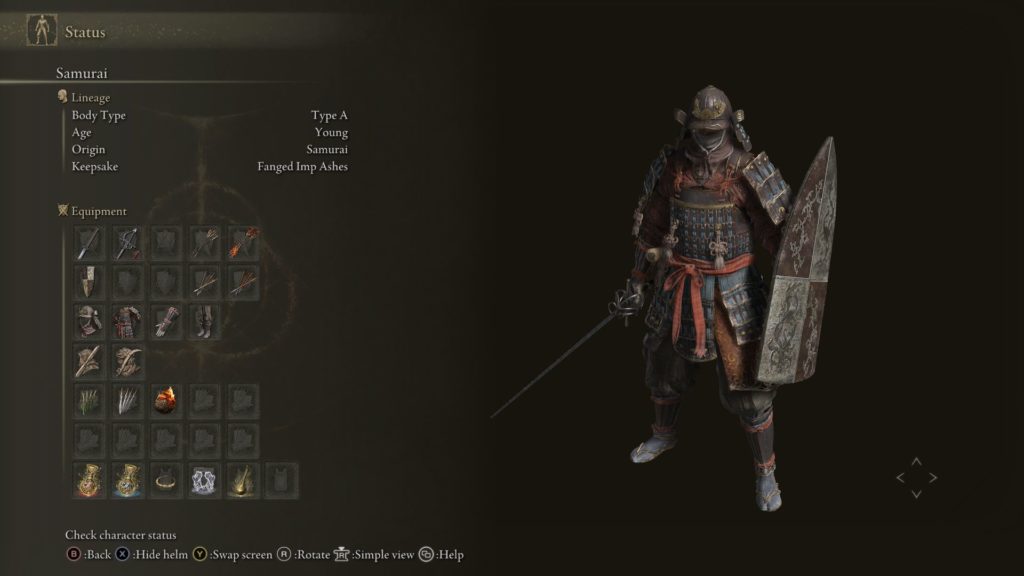
Perhaps one of the most important features of an RPG is customization. As players explore different areas and complete challenges, they should be able to customize their character’s stats, abilities, inventory items, and more. This gives each player a sense of ownership over their personal journey within the game world and allows them to feel like what is happening around them has been created for them specifically.
One great way to encourage customization in RPGs is by offering a variety of classes for players to choose from when starting out on their adventure. Each class should have a unique set of skills and abilities that will allow players to play in a way that suits their individual preferences. Additionally, allowing players to choose from different races or factions can be another great way to encourage customization and make the RPG feel more personalized for each player.
Leveling
Finally, you should also think about how your RPG progresses on a level-by-level basis. The type of progression you use will depend largely on the pacing and customization options available within your game. For example, if you want to move at a fast pace with lots of action and challenges, then it might be best to reward leveling up based on achievements or quests completed rather than simply having an experience point system (though this one is still commonly used today).
On the other hand, if you want to take a slower approach with more focus on character development and exploration, then having an experience point system that players can use to level up their attributes might work best. Ultimately, it’s all about finding the balance between giving your players freedom and encouraging them to progress in ways that make sense for their individual journeys within your game world.
Resources
Tutorials
RPG SKill Algorithms and Concepts
Skill algorithms play a huge role in RPG development, crafting an engaging and believable experience for the player. As anyone who has played a role-playing game knows, combat is not always about dealing damage. In fact, some of the most interesting and strategically complex battles are those in which status effects play a major role. Unfortunately, coming up with original and effective status effects can be a challenge. Do you go for classic ailments like poison or paralysis, or try something new? And how do you make sure that your buffs are just as interesting as your debuffs?
In this forum post, users discuss about how to make skills with some additional data like attribute, status effects.
It can be difficult to come up with attack, defense, and other curves that are interdependent on four basic stats. However, it is important to remember that these values shouldprogress in a slow, upward way. Strength, constitution, intelligence, and dexterity are all important factors to consider when creating these curves. By taking the time to create a well-balanced system, you will ensure that your curves are both effective and efficient.
Using the Composite Design Pattern for an RPG Attributes System
It's no secret that developing video games can be a daunting task. Not only do you have to come up with a fun and original concept, but you also have to design intricate gameplay mechanics that will keep players engaged for hours on end. And if you're working on an RPG, you also have to come up with a believable and consistent system for calculating stats like intelligence, willpower, charisma, and wisdom.
One way to handle this is to use the Composite Pattern. This is a design pattern that allows you to build complex objects from simpler ones. In the context of an RPG, you could use the Composite Pattern to create an "Attribute" class that represents one of the aforementioned stats. This Attribute class would then be composed of smaller sub-classes like "StatBonus" and "ItemBonus." By breaking down the Attribute into smaller pieces, you can more easily calculate its value on the fly.
So if you're working on an RPG and struggling with how to calculate attributes, consider reading this tutorial about the Composite Pattern. It's a simple yet powerful tool that can help make your game more balanced and consistent.
Discussion about programming big numbers in idle RPG or tap RPG games
In Idle RPG and Tap RPG, the player's status is determined by a few big numbers. These numbers are used in many different ways to calculate various aspects of the game. For instance, the amount of damage that a player deals is based on their strength stat, which is multiplied by their weapon's damage value. This number is also used to determine how much health a player has, as well as their mana pool.
However, these numbers can be difficult to program without breaking the data byte. This is because these numbers can be quite large, and can easily cause an overflow if not handled correctly. In order to avoid this, it is important to use a programming language that has good support for working with large numbers.
In these forum posts, many will discuss how to program these big numbers and what implications they have on the gameplay.
Learn Unity Engine and C# by creating a real top-down RPG
In this video, you will learn how to create a real top-down RPG using the Unity engine and C# programming language. The video starts with an introduction, followed by a section on setting up your project. Next, you will learn how to move your character and how to detect collisions manually. After that, you will tile your map and design your dungeon. Then, you will make your objects interactive and learn about inheritance. After that, you will save your game's state. Finally, you will polish your game and add content. By the end of this video, you will have a complete top-down RPG that you can play and share with your friends.
How to create a scalable MMORPG server-side
When it comes to creating a scalable MMORPG server-side, there are a few key considerations to keep in mind. First, you need to choose the right architecture for your game. There are a few different options available, and each has its own pros and cons. Second, you need to be aware of potential performance issues that can occur when using certain programming languages and technologies. Third, it is helpful to consult with experts in the field to get their opinions on the best technologies to use. Read more on this discussion!
Three.js
Tutorials
I Tried Making a 3D RPG Game in JavaScript
This tutorial is a beginners guide to making 3D games in JavaScript. It will show you how it's done with threejs, an open-source library that makes creating these types of graphics much easier!
Create a 3D RPG Game With THREE.js
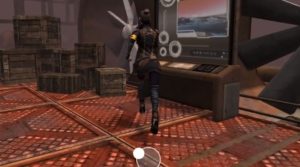
This is an online course that teaches you how to create 3D ROG games using Three.js. You will learn how to control a character, load external assets, apply animations, and use simplified geometry to keep the user character within the environment. You will also learn how to load complex external 3D assets, apply animations to a skinned mesh, and use simplified geometry to contain the user character within the environment.
The course is designed for people with some programming experience, but even if you don't have any programming experience, you should be able to follow along.
Unity
Gamekits
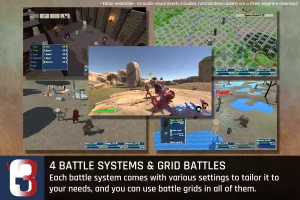
ORK Framework is an incredibly flexible toolkit for building RPGs. It comes with everything you need to create your game, any way you want. The four customizable battle systems are perfect for any kind of RPG, 2D or 3D. And the extremely flexible status system lets you tailor the game to your specific desires.
Plus, there's a formula editor, inventory system, factions, quests, crafting, dialogues, and much more. You can find extensive documentation and tutorials online to guide you through the process, step by step.
Some of the features include a status system, battle system, inventory system, and editor. The status system is highly flexible and can be set up as simple or complex as you need it for your game. The battle system supports turn-based, active time, real-time, and phase. Each system can be tweaked to your needs.
The inventory system contains everything you need, such as optional inventory slots, space limits, stack limits and many more features. The editor allows you to set up your systems and create your data (items, abilities, etc.). With all these features, ORK Framework is the perfect tool for anyone looking to create their own RPG.
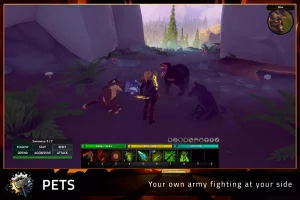
Develop your dream RPG with ease using the RPG Builder Editor! With 31 RPG Modules and FULL source code included, you can create your game without having to worry about coding. Plus, with 32+ AAA Humanoid Animations and 100+ videos on YouTube, you can make your game look as amazing as you want.
And with a Third-Person Action RPG Character Controller, you can create an immersive gaming experience for your players. With 11 partners, you can be sure that you'll have all the help you need to make your dreams a reality.
Assets
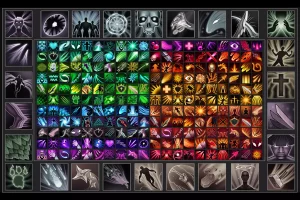
With over 4000 icons to choose from, Fantasy Icons has something for everyone. Whether you're looking for a simple monster icon or a detailed skill icon, you're sure to find what you need in this huge collection. And with 25% off the regular price, there's never been a better time to buy. When you purchase Fantasy Icons, you'll also receive free updates for life.
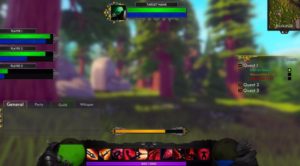
RPG games are known for their expansive worlds and complex storylines. But what's a good story without a great UI to match? That's where the OBSIDIAN UI pack comes in, providing you with all the elements you need to build the perfect UI for your RPG game.
With 34 buttons, 7 cursors, 3 crosshairs, 3 HUD art pieces, and 70 icons, you'll have everything you need to create a truly immersive experience for your players. And with 18 slots and 58 prefabs, you'll be able to customize your UI to perfectly fit the needs of your game.
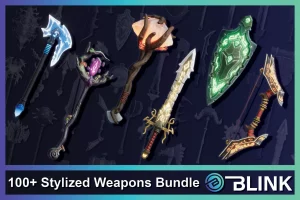
This amazing collection includes over 100 individual weapons, each with 3-6 color variations. Whether you're looking for two-handed swords, one-handed swords, two-handed axes, one-handed axes, two-handed maces, one-handed maces, two-handed hammers, one-handed hammers, shields, bows, crossbows, or quivers, this bundle has it all.
Plus, all of the medium and epic weapons come with optional emission textures for your legendary loot! Whether you're a seasoned gamer or just getting started, this bundle is a great way to kit out your character with some amazing weaponry.
Unreal Engine
Gamekits
The Advanced RPG System, or ARS, is a plugin for the Unreal engine that allows developers to easily build complex RPG systems. Based on components, ARS is totally system agnostic and 100% plug and play. This means that you can define your own attributes (like strength, dexterity, intelligence, etc.), statistics (health, stamina, mana, etc.), and parameters (melee damage, fire damage, crit chance, melee defense, etc.) without any hassle.
Additionally, ARS allows developers to define their own rules on how each attribute can affect the others through the use of float curves. This makes it easy to create custom and balanced gameplay without having to worry about the technicalities.
Some of the features include attributes and stats management, configurable attribute and stats generation logic, modifiers logic, level up logic, multiplayer readiness, written in C++ for maximum performance, and sample UI and HUD bars. These features make ARS an essential tool for any developer looking to create a detailed and comprehensive RPG system. While there are other plugins available that offer similar functionality, ARS stands out due to its ease of use and flexibility.
In addition, the team behind ARS is constantly updating the plugin to ensure that it remains compatible with the latest versions of Unreal Engine. As a result, ARS is an invaluable asset for anyone looking to create a high-quality RPG game.
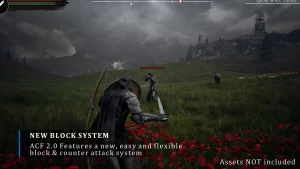
If you're looking to build an action RPG with amazing combat in Unreal Engine, try the Ascent Combat Framework. This powerful C++ plugin provides everything you need to create a state-of-the-art, fluid ranged and/or melee combat system. Plus, it supports networking, so you can easily create multiplayer games.
Best of all, its modular and generic architecture lets you build your own gameplay, avoiding the "garbage asset flipper" feeling that most indie games have when made with pre-made assets. With ACF, you have the ability to shape your vision and build a polished and unique game experience.
Some of its features include a Generic Character Controller, a Generic Actions System, a Curve Driven Animation System, an Items & Inventory System, and much more. It also has an AI Framework & Companions system, an AI Groups system, and a Statistics & RPG Framework (ARS).
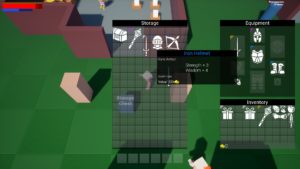
Are you looking for a complete RPG kit that has everything you need to get started on your next great game? This all-in-one template has everything you need to create a single or multiplayer RPG, including the main menu, game settings, keymappings, quick access bar, level and XP system, statistical attributes, and more.
Plus, there are Quest features with collectibles and trigger areas, achievements, notifications, dialogues with NPCs, and even a vendor system.
With robust features like keymapping, save and load, inventory, equipment, crafting, skills system, and dialogues, you can customize your game to gameplay however you want. There's also an Achievements system to add an extra layer of challenge and fun.
Assets
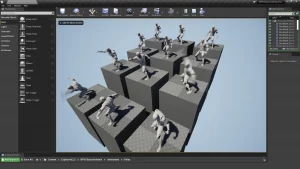
The RPG Character Anims package provides 997 polished and professional animations, rigged to the Epic Skeleton. It includes 15 different fighting/movement styles/weapon types.
- 2 Handed Sword
- 2 Handed Axe
- 2 Handed Spear
- 2 Handed Bow
- 2 Handed Crossbow
- 2 Handed Rifle
- 2 Handed Staff
- Unarmed
- 1 Handed Sword Left/Right
- 1 Handed Mace/Hammer Left/Right
- 1 Handed Dagger Left/Right
- 1 Handed Thrown Weapons Left/Right
- 1 Handed Spear Right
- Left/Right/Dual Pistols
- Shield
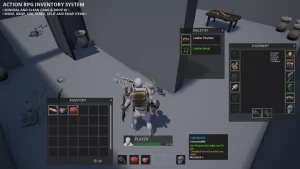
The Action RPG Inventory System is the perfect way to keep track of your belongings in multiplayer games. With its easy-to-use interface, you can quickly and easily equip and use items in your inventory, whether you're playing alone or with friends. The system features equipable and usable items, so you can customize your character to fit your playstyle.
This inventory system makes it easy to interact with the world around you. You can easily access your inventory and use items within the game. The system is also designed to minimize network traffic when passing item information between the server and clients. This ensures that your game runs smoothly and efficiently.
It's also designed with a multiplayer first approach, so you won't have to worry about lag or other connection issues when playing with others.
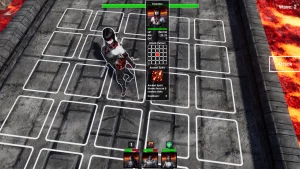
The Turn-Based RPG Template is a great way to get started on your own turn-based RPG. The Blueprint template provides you with all of the core functionalities you need, including drag & drop units on a grid, character stats, and skills, wave of enemies, and boss fights.
You can easily add your own content to the template with the drag & drop system. The camera movements and the wave of enemies are also set up in the template. You can use supportive and offensive skills to give your characters an edge in battle. The damage system is based on stats, so you can customize it to your liking. With the Turn-Based RPG Template, you can create your own turn-based RPGs without programming.
Samples
Action RPG is a third-person hack-and-slash game designed to help developers learn more about how to use UE4 to develop high-end mobile games for Android and iOS. The game features a simple controls scheme that consists of a left joystick for movement, a right joystick for attacking, and buttons for jumping and defending. With these controls, players will be able to engage in fast-paced combat against hordes of enemies, learning how to utilize the different abilities at their disposal to create unique strategic combos.
In addition to the main campaign mode, Action RPG also features an Arena mode where players can test their skills against other players in online multiplayer battles. Whether you're an experienced developer or just getting started with UE4, Action RPG is sure to provide you with the resources you need to take your mobile game development to the next level.
JavaScript
Tutorials
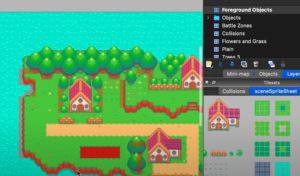
RPG games have been around for a long time, and one of the most popular RPG games of all time is Pokémon. In Pokémon, you battle other trainers to become the best Pokémon trainer in the world. The battles are turn-based, which means that both you and your opponent take turns attacking each other.
In this video course, you will learn to make your own Pokemon game using JavaScript. You will learn how to create the game world, how to make the player move around, and how to add NPC characters. You will also learn how to make the player battle other trainers, and how to use items.
Python
Libraries
Pygame is an open-source library that allows developers to create games and other multimedia applications using the Python programming language. It is a set of Python modules designed for writing video games. Pygame adds functionality on top of the excellent SDL library. This allows you to create fully featured games and multimedia programs in the python language.
It offers a wide range of features for game development, including support for sprites, tilesets, 3D rendering, sound playback and recording, and more.
Pygame is highly portable and runs on nearly every platform and operating system. Some numerous community-developed libraries and programs extend pygame functionality even further. In short, if you want to write a game or multimedia program in python, pygame is an excellent place to start.
Tutorials
Creating a Zelda-style game in Python
In this video, you'll learn how to create a Zelda-style RPG in Python that includes many of the elements you need for a sophisticated game, such as graphics and animations, fake depth, upgrade mechanics, and more. You'll also get to see how to create a level map for your game. This video is a great resource for anyone who wants to learn how to create their own Zelda-style game in Python.
Flutter
Gamekits
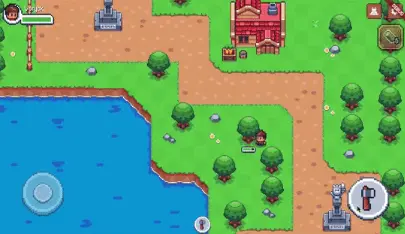
Bonfire is a game kit based on Flame that gives you the ability to create RPG games with ease. With Bonfire, you have access to a wide range of features that will allow you to create the game of your dreams. You can use Bonfire to create role-playing games, real-time strategy games, and even first-person shooters. The possibilities are endless with Bonfire.
Bonfire is ideal for building games from the following perspectives: 45, 67.5, and 90. You can use Bonfire to create top-down or action RPG games like The Legend of Zelda: Breath of the Wild, or you can use it to create more traditional JRPGs like Final Fantasy VI.
You can also use Bonfire to create strategy RPGs like Fire Emblem: Three Houses, or you can use it to create tactical RPGs like XCOM 2. Basically, if you can think of an RPG, chances are you can build it with Bonfire. And that's just RPGs! You can also use Bonfire to build point-and-click adventure games like Monkey Island, or platformers like Super Mario Bros.
It offers support for keyboard and virtual gamepad controls, as well as ready-made entities for players, enemies, and followers. Additionally, Bonfire makes it easy to implement melee attack mechanics and flying attack objects. Plus, with mixins and functions included for NPC movement, pathfinding, and dialogue, you'll be able to create a fully fleshed-out game world for your players to explore. And with support for Tiled maps - including animated tiles, collisions, and tile properties - you can create rich, multi-layered environments for your characters to interact with.
RPG Maker
https://store.steampowered.com/app/363890/RPG_Maker_MV/
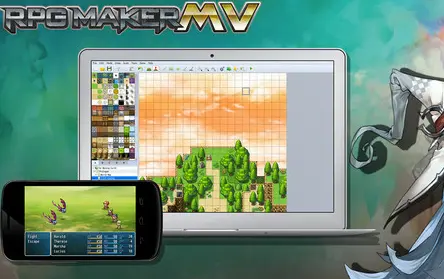
RPG Maker has been a dream for many gamers who wanted to create their own role-playing games. With RPG Maker MV, you have everything you need to create the RPG of your dreams- whether you're a seasoned developer or a child who's just getting started in game development.
RPG Maker MV is the latest installment in the RPG Maker series and enables you to create your own role-playing games for the Windows PC. With an improved map editor and a simple event system, it has never been easier to bring your game world to life. In addition, RPG Maker MV comes with built-in resources that you can use in your game, from sprites to battlers, from audio to tilesets.
The simple interface makes it easy to get started quickly and the versatility of the software means you can export your games to many different platforms, including MacOSX, Android, and iPhone.
